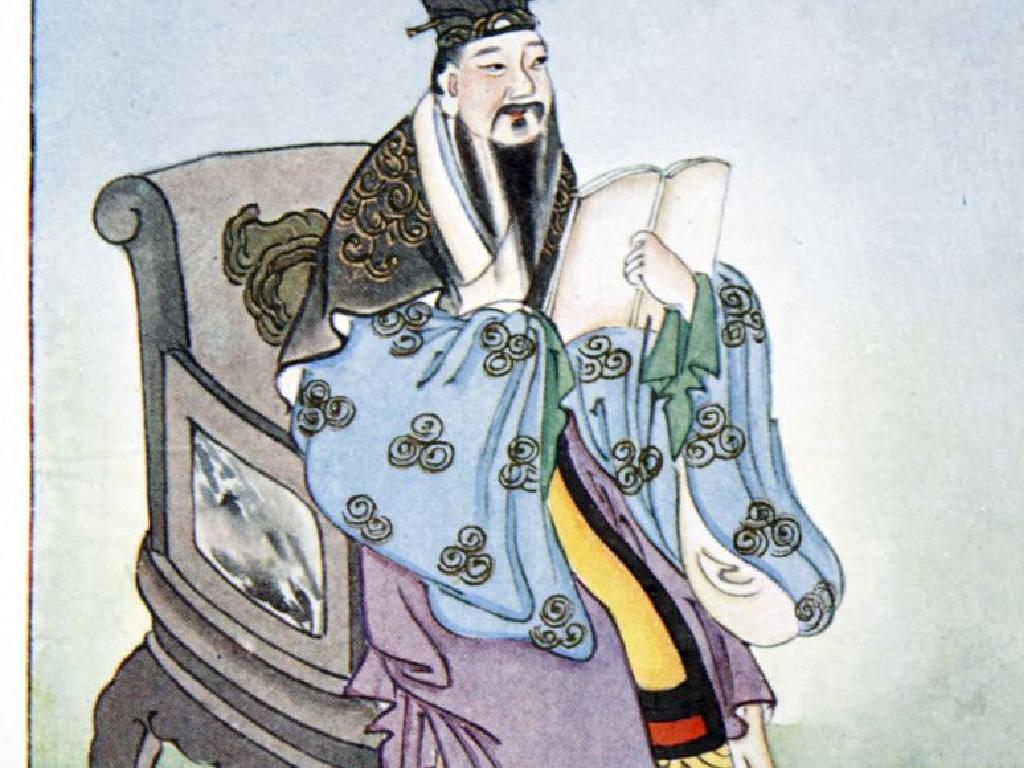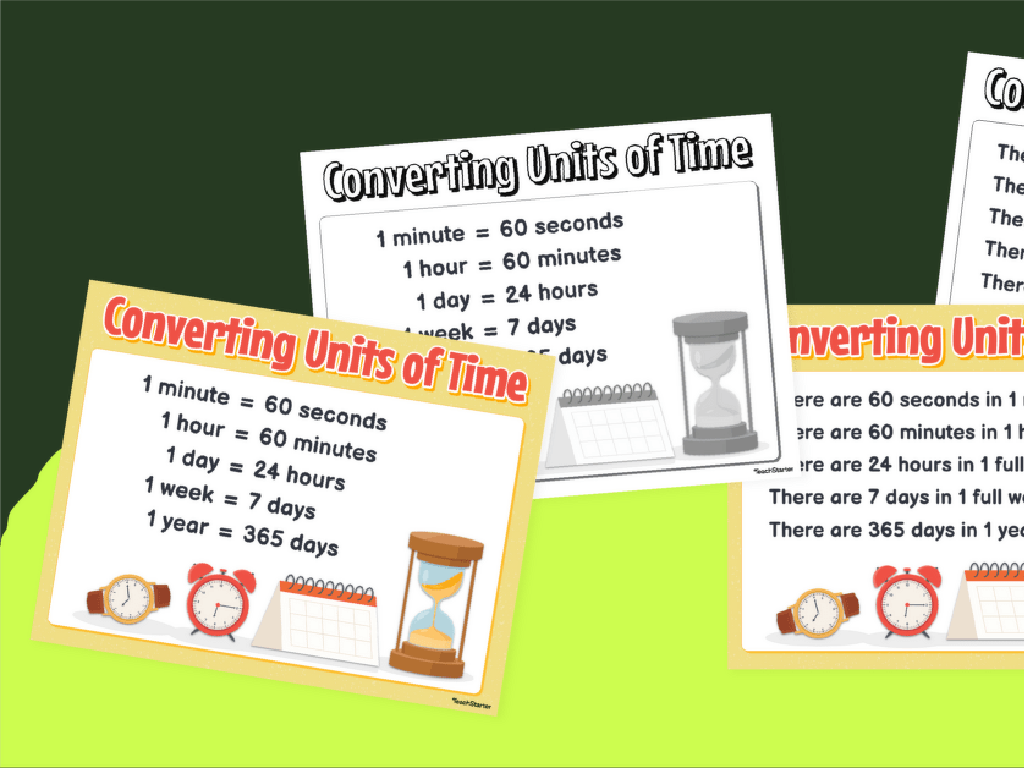Interpret Evidence From Fossils In Rock Layers
Subject: Science
Grade: Fourth grade
Topic: Fossils
Please LOG IN to download the presentation. Access is available to registered users only.
View More Content
Welcome to the World of Fossils!
– What exactly are fossils?
– Fossils are remains of ancient life, like bones or shells.
– The process of fossilization
– Fossils form when living things get buried by sediment and turn into rock.
– The significance of fossils
– Fossils help us understand past life and Earth’s history.
– Exploring rock layers
– Fossils in rock layers show us how life changed over time.
|
This slide introduces students to the concept of fossils and their importance in understanding Earth’s history. Begin by explaining that fossils are the preserved remains or traces of animals, plants, and other organisms from the remote past. Then, describe the process of fossilization, where once-living things become buried and eventually turn into rock. Emphasize the significance of fossils in teaching us about the different forms of life that existed long ago and how they evolved over time. Lastly, discuss how fossils found in different rock layers can give us clues about the age of the rocks and the changes in the environment and life forms over millions of years. Encourage students to think about how fossils provide a historical record of life on Earth.
Exploring Types of Fossils
– Body fossils: actual organism parts
– Like bones, teeth, or shells preserved in rock
– Trace fossils: evidence of organism activity
– Includes footprints, nests, or droppings left behind
– Formation of body fossils
– Happens when an organism is buried quickly by sediment
– Formation of trace fossils
– Formed by the preserved impressions of activities
|
This slide introduces students to the two main types of fossils and how they are formed. Body fossils are the preserved remains of an organism’s actual body parts, such as bones, teeth, or shells. Trace fossils are different as they are not parts of the organism’s body but are evidence of the organism’s presence and activities, like footprints, burrows, or feces. Understanding how each type of fossil is formed is crucial. Body fossils typically form when an organism’s remains are quickly buried by sediment, protecting them from decay. Trace fossils form when the impressions of an organism’s activities are preserved in the sediment. Encourage students to think about how these fossils provide us with evidence of past life and how different conditions can affect the type of fossil that is formed.
The Fossilization Process
– Steps of fossilization
– Death, burial, and preservation are key steps.
– Conditions for fossilization
– Need quick burial, little oxygen, and right minerals.
– Reasons not all become fossils
– Decay, predators, or elements prevent fossilization.
– Fossilization’s rarity
|
This slide introduces students to the concept of fossilization. Begin by explaining the three main steps: an organism’s death, its subsequent burial under sediment, and the preservation of its remains as a fossil. Discuss the specific conditions that are necessary for fossilization, such as rapid burial to protect the body from scavengers and decay, low oxygen levels to slow down decomposition, and the presence of minerals that replace the organic material over time. Highlight that not all organisms become fossils because the conditions have to be just right; many factors can prevent fossilization, such as exposure to the elements, consumption by predators, or bacterial decay. Emphasize the rarity of fossilization to help students appreciate the uniqueness of each fossil they study.
Reading Rock Layers and Fossils
– Formation of rock layers
– Layers form over time; bottom layers are oldest
– Learning from rock layer order
– Order shows Earth’s history; oldest fossils are deeper
– Understanding the Law of Superposition
– Younger layers on top, older layers on bottom
|
This slide introduces students to the basics of stratigraphy and the significance of rock layers in understanding Earth’s history. Explain that rock layers, or strata, are formed over time by the accumulation of sediments. The order of these layers can tell us the sequence of events that have occurred, with the oldest layers at the bottom and the youngest at the top, as stated by the Law of Superposition. Emphasize that fossils found within these layers can give us clues about the organisms that lived during those times. Engage the class by asking them to imagine they are detectives looking back in time, piecing together the story of our planet.
Interpreting Fossil Evidence
– Fossils indicate rock age
– Older rocks are deeper with older fossils
– Fossils reveal past environments
– Types of fossils show what the environment was like
– Paleontologists’ role with fossils
– Scientists who study fossils to learn about prehistoric life
– Fossils: A window to ancient life
– Fossils help us imagine how ancient creatures lived
|
This slide introduces students to the concept of using fossils as a tool for understanding Earth’s history. Fossils found in rock layers can help determine the relative age of those layers, with deeper layers generally being older. Different types of fossils give us clues about what the environment was like in the past, such as whether it was underwater or on land. Paleontologists are scientists who study fossils to gain insights into the life and behavior of ancient organisms. By examining fossil evidence, students will learn how these remains provide a snapshot of life millions of years ago and how environments have changed over time. Encourage students to think about how the Earth has transformed and what kind of fossils they might expect to find in different rock layers.
Fossils and Extinction
– Mass extinctions in history
– Earth has had major extinction events that wiped out many species.
– Discovering extinct fossils
– Fossils are remains of creatures that lived long ago, now extinct.
– Fossils’ tales of the past
– Fossils show us organism’s shape, size, and sometimes how they lived.
– Learning from fossils
– We study fossils to understand life’s history and Earth’s changes.
|
This slide introduces students to the concept of mass extinctions and the role fossils play in understanding organisms that are no longer around. Discuss the five major extinction events in Earth’s history, highlighting how they led to the loss of many species. Show examples of fossils from extinct organisms, such as dinosaurs, to capture the students’ interest. Explain how fossils provide clues about the physical characteristics of these organisms and their environment. Emphasize the importance of studying fossils to learn about the history of life on Earth and the changes our planet has undergone. Encourage students to think about what fossils they know and what these fossils can tell us about the past.
Class Activity: Fossil Layers Exploration
– Create a playdough ‘fossil dig’
– Excavate and document ‘fossils’
– Use tools gently to uncover objects representing fossils
– Discuss the story of each layer
– What does the depth tell us about their age?
– Understand past life from ‘fossils’
– Fossils give clues about creatures that lived long ago
|
This hands-on activity is designed to simulate a fossil dig. Provide students with layered playdough and embed small objects at different levels to represent fossils. Equip them with tools for excavation, such as toothpicks or small brushes. As they carefully excavate, they should document their findings, noting the depth and layer of each ‘fossil’. After the dig, lead a discussion on how the layering of fossils can indicate their relative age, with deeper layers being older. This will help students understand how scientists use rock layers to learn about the history of life on Earth. Possible variations of the activity could include using different colors of playdough to represent different geological periods, or embedding ‘fossils’ that would be typical of certain eras.






